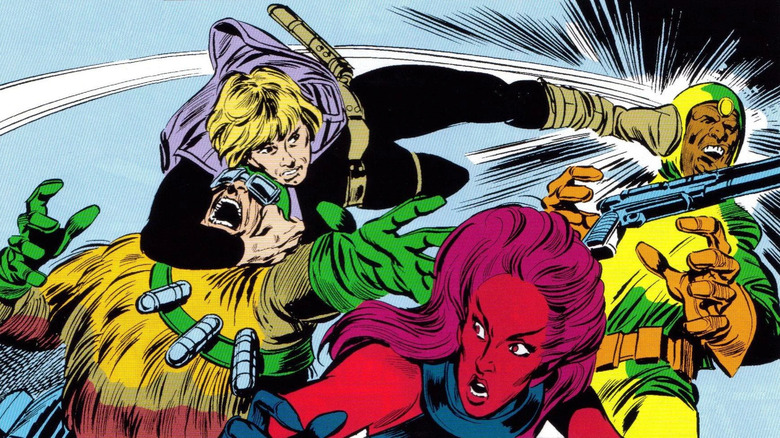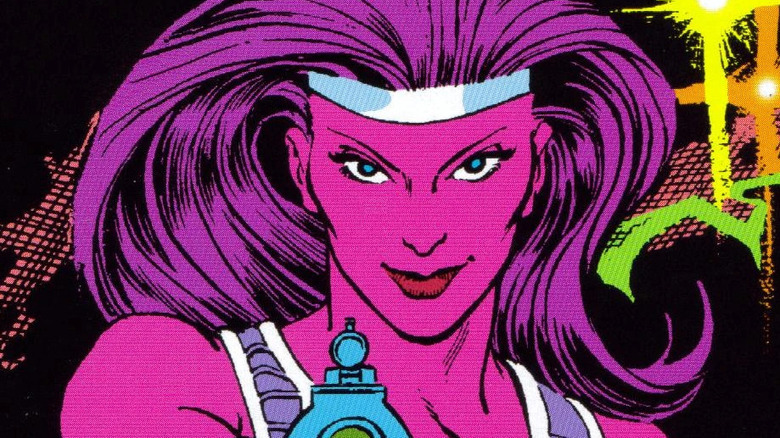Star Wars' Answer To Star Trek's Betazoids: Zeltrons Explained
For all the ways "Star Wars" and "Star Trek" differ, they're surprisingly similar when it comes to the birds and the bees. Many of the heroes in both franchises prioritize their causes over the pursuit of sexual pleasure, be it peacekeeping and scientific exploration as a Starfleet officer or diplomacy and fighting against the forces of fascism as a member of either the Rebel Alliance or the Republic (if not both in some cases). By the same token, members of the Old Jedi Order were forbidden from developing emotional attachments, although the man behind "Star Wars" itself, George Lucas, has said that Jedi Knights weren't required to be "celibate."
It's a good thing, too; Luke Skywalker definitely got around in the non-canon "Star Wars" Expanded Universe (aka Legends), and Mark Hamill has confirmed that so far as he's concerned, the son of Skywalker absolutely put his ... lightsaber to work.
There are, of course, exceptions to every rule. In "Star Trek," for example, you have Betazed, a planet populated by telepathic human-esque individuals, known as the Betazoids, who are a bit like Dionysus (or Jack Black, whichever deity you subscribe to) in their devotion to hedonism. But as often as the Betazoids' ribaldry has been played for gentle laughs since their introduction in "The Next Generation," where the half-human Deanna Troi (Marina Sirtis) was revealed to have gained her unusual aptitude for empathy from her full-blooded Betazoid mother Lwaxana Troi (Majel Barrett), more recent "Star Trek" series like "Lower Decks" have depicted them as being more than just frisky carousers.
Funnily enough, "Star Wars" has an answer to the Betazoids. No, not Prince Xizor, the cunning head of the Black Sun crime organization who very nearly seduced Leia Organa using his potent pheromones in the Legends novel "Shadows of the Empire." (Let me tell you; when the EU got horny, it got horny.) I'm actually referring to the Zeltrons.
I've got a not-so-bad feeling about this
Speaking of Xizor, the humanoid Zeltrons are seemingly capable of producing pheromones much like the classic '90s "Star Wars" villain's race, the reptilian Falleen. The difference is that where Xizor used this ability to try and get into other individuals' pants without them knowing what he was doing (which is in no way intended to stereotype the Falleen in general; Xizor's misconduct was his and his alone), the Zeltrons typically exude chemicals that have a calming effect.
As with the Betazoids, you see, Zeltrons are essentially empaths who are highly attuned to the emotions of those in close vicinity, so much so that they can experience heightened versions of those very feelings. Naturally, this can be a problem under certain circumstances, which is why the Zeltrons in the current "Star Wars" canon are taught at a young age to always be mindful of their emotions.
The EU/Legends iteration of Zeltrons had even more in common with the Betazoids, right down to their culture's very sexual art, polyamorous lifestyles, and reputation for living life like they're on permanent vacation on Fire Island (complete with their fondness for being scantily-clad and dressing in highly evocative colors). It's not exactly shocking that their sexcapades have been toned down dramatically, if not abandoned outright, during what little we've gotten of them in the Disney-era "Star Wars" canon so far, which is too bad, given that the Zeltrons were portrayed in a relatively sex-positive light for their time. The Zeltron thief Dani (seen above) even had a fling with Luke before breaking up with him of her own accord (as opposed to getting killed, like so many of his other love interests).
But who knows: just as "Star Trek" has given the Betazoids their due respect of late, perhaps "Star Wars" will one day follow and boldly go where the franchise hasn't been willing to go before (canonically).

